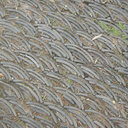Anti-pruritic and anti-inflammatory effects of oxymatrine in a mouse model of allergic contact dermatitis.
Nyckelord
Abstrakt
BACKGROUND
Allergic contact dermatitis (ACD) is a highly prevalent inflammatory disease of the skin. As a result of the complex etiology in ACD, therapeutic compounds targeting refractory pruritus in ACD lack efficacy and lead to numerous side effects.
OBJECTIVE
In this study, we investigated the anti-pruritic effects of oxymatrine (OMT) and explored its mechanism of action in a mouse model of ACD.
METHODS
72 male SPF C57BL/6 mice were randomly divided into control group, ACD model group, dexamethasone positive control group (0.08 mg kg-1) and 3 OMT groups (80, 40, 20 mg kg-1). OMT was administrated by intraperitoneal injection 1 h before video recording on day 10, 24 h after 2nd challenge with SADBE. Cheek skin fold thickness was measured before treatment and after recording. H&E staining was used for pathological observation. RT-qPCR, Immunohistochemistry and LEGENDplexTM assay were used to detect cytokines levels. The population of Treg cells in peripheral blood were detected via flow cytometry.
RESULTS
OMT treatment significantly decreases the skin inflammation and scratching bouts. It rescues defects in epidermal keratinization and inflammatory cell infiltration in ACD mice. Administration of OMT significantly reduced levels of IFN-γ, IL-13, IL-17A, TNF-α, IL-22 and mRNA expression of TNF-α and IL-1β. Furthermore, it increased the percentage of Treg cells in peripheral blood of ACD mice.
CONCLUSIONS
We have demonstrated that OMT exhibits anti-pruritic and anti-inflammatory effects in ACD mice by regulating inflammatory mediators. OMT might emerge as a potential drug for the treatment of pruritus and skin inflammation in the setting of ACD.




